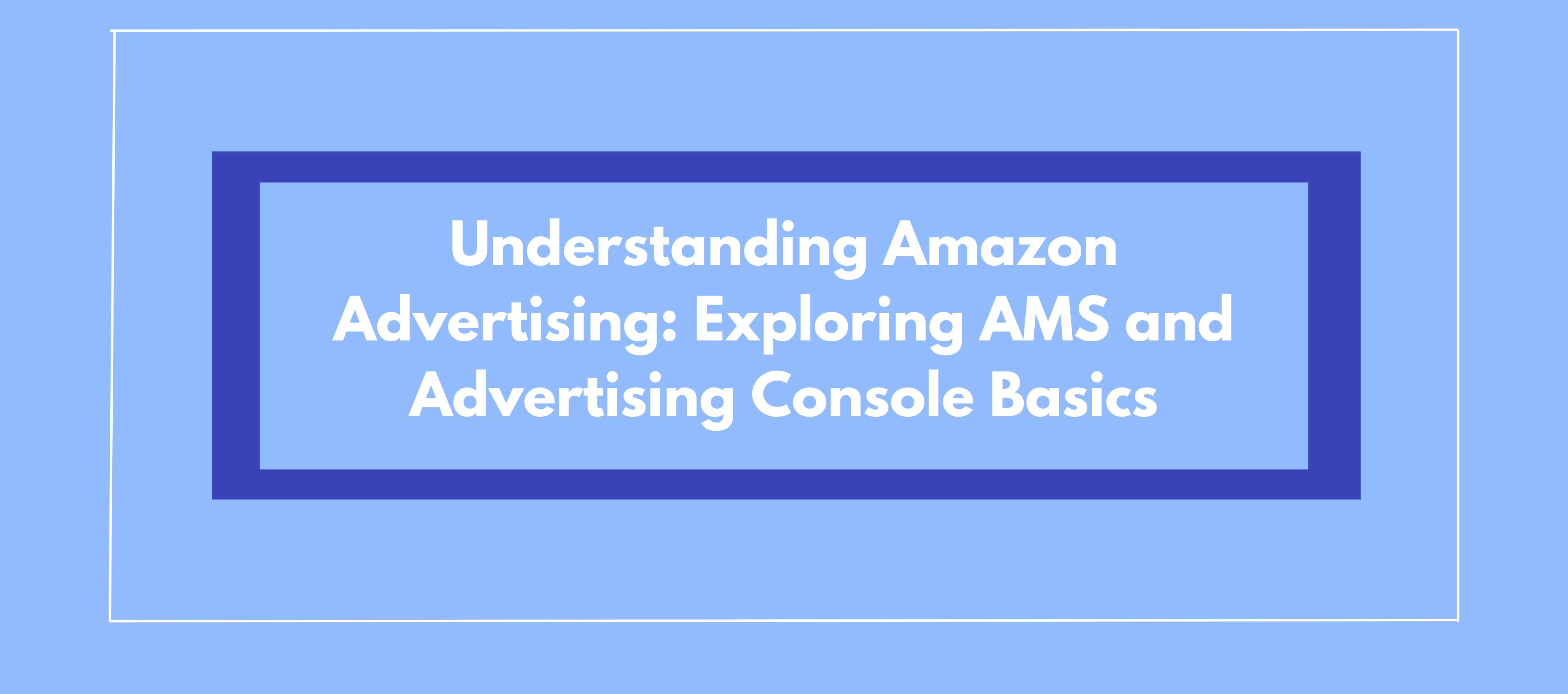
Amazon’s advertising capabilities are evolving at a rapid pace, and brands are taking notice. Nearly half of all Amazon sellers are investing substantial amounts in advertising on Amazon each month, with Amazon Marketing Services (AMS) – now commonly known as Amazon Advertising Console – serving as the primary platform for these campaigns. In this article, we’ll explore the basics of Amazon AMS, its rebranding journey, and how brands can leverage the Amazon Advertising Console to boost visibility and drive sales.
Contents
Amazon Marketing Services, once the standard term for Amazon’s advertising suite, encompassed various ad formats, including Sponsored Products, Headline Search Ads (now Sponsored Brands), and Amazon Display Ads. The AMS platform was known for its cost-per-click (CPC) model, differentiating it from Amazon’s impression-based Advertising Platform, Amazon DSP.
Over the years, Amazon unified its advertising brands under the simplified “Amazon Advertising” banner, rebranding AMS as the Amazon Advertising Console. This change aimed to make advertising more accessible and streamlined for users, yet many sellers still refer to the platform as AMS.
In 2018, Amazon simplified its advertising structure by consolidating its tools and platforms. Amazon Marketing Services (AMS), Amazon Media Group (AMG), and Amazon Advertising Platform (AAP) became part of a single platform under Amazon Advertising. Today, AMS is called the Amazon Advertising Console, and the legacy ad types have been rebranded:
This consolidation allows sellers and vendors to access self-service ad solutions within Seller Central or Vendor Central, depending on their Amazon registration status.
The Amazon Advertising Console, or AMS, offers a variety of ad formats that can be tailored to different stages of the customer journey. Here’s a closer look at the primary ad types available to sellers today:
Sponsored Products ads are designed to drive direct sales by targeting customers who are actively searching for specific products. Ads can appear in prominent placements, such as at the top or bottom of search results and on product detail pages.
These ads are ideal for targeting lower-funnel customers who are close to making a purchase decision, making Sponsored Products one of the most efficient tools for driving conversions.
Sponsored Brands (formerly Headline Search Ads) offer a high-visibility banner at the top of search results, allowing brands to showcase a selection of products and increase brand awareness.
By placing a prominent logo and showcasing multiple products, Sponsored Brands ads are perfect for reaching upper-funnel shoppers who may be exploring options within a category.
Sponsored Display Ads allow brands to reach audiences both on and off Amazon. These ads appear on the Amazon website as well as across Amazon’s partner sites, making them a powerful tool for retargeting.
Sponsored Display provides expanded reach, giving brands the ability to engage shoppers throughout the buying journey and drive them back to the product page or storefront.
Amazon’s dedication to ads within its marketplace has made the Amazon Advertising Console an essential tool for brands aiming to boost product visibility and sales. Key advantages include:
Targeted Reach: Sponsored ads allow advertisers to target individual product detail pages, capturing potential buyers who are already looking at similar products.
Optimized for Conversion: The CPC model of Amazon AMS/Advertising Console enables advertisers to pay only for clicks, optimizing budget use.
Strategic Placement: Sponsored ads appear in high-visibility locations, including top search results and relevant product pages.
Flexible Campaign Management: From the ability to adjust bids and budgets to various targeting and keyword matching options, the platform is designed for dynamic campaign optimization.
To access the Amazon Advertising Console, sellers and vendors can log in through Seller Central or Vendor Central, depending on their status. A few tips for getting started:
Set Clear Goals: Define whether you’re aiming for direct conversions, brand awareness, or remarketing to previous viewers.
Budget Wisely: Begin with a daily budget for Sponsored Products, and experiment with lifetime budgets for Sponsored Brands campaigns.
Leverage Keyword Research: Ensure keyword targeting aligns with shopper behavior to optimize ad performance.
Analyze & Refine: Use Amazon’s reporting tools to track metrics such as click-through rates (CTR) and cost-per-acquisition (CPA) to refine your campaigns.
For brands looking to scale on Amazon, mastering the basics of the Amazon Advertising Console (formerly AMS) is a vital step. Sponsored Products, Sponsored Brands, and Sponsored Display each serve unique roles within a brand’s advertising strategy, allowing targeted approaches for different customer journey stages. By using the Amazon Advertising Console effectively, brands can drive growth, improve visibility, and remain competitive in an increasingly crowded marketplace.
© 2024 SellerRocket TM . All Rights Reserved.
Get our latest updates directly to your inbox.
Only the best in eCommerce and affiliate news, tips and tricks.
